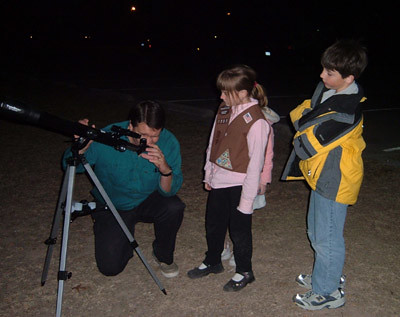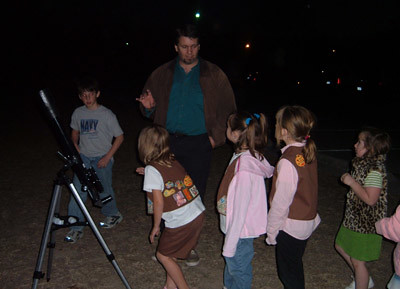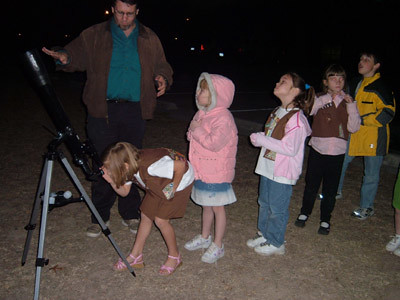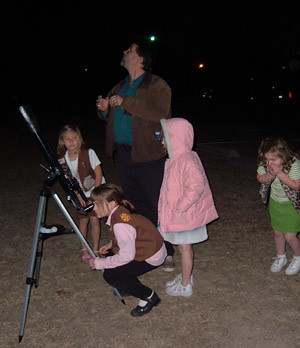
Here, I'm spotting Saturn, which was relatively low in the sky this particular evening, and at one point was occulted by power lines.

Here, we're preparing for some serious viewing of the waxing gibbous moon.

This time, Calista's taking a peek at the moon through a higher magnification eyepiece. She took particular delight in warning the other kids "Don't touch the telescope or you'll knock the moon out of view!"

And here, we can see me start to realize that the heavens weren't exactly as I'd assumed they were. Two particularly bright stars appeared around sunset, roughly in line with the Moon. One was distinctly red. Since I knew Mars and Saturn were the two planets visible this time of year, I assumed that's what they were--they were more or less where they belonged, I thought. Wrong. As it got darker and more stars came out, I realized that "Mars" was actually Betelgeuse, and that "Saturn" was Sirius. What I'd assumed were east and west obviously weren't. Once I got re-oriented, it was easier to spot the "correct" planets!
The moon, happily, was almost in perfect phase for good observations--the sun's angle was such that shadows cast offered excellent depth and contrast. And there was enough light to get good detail even at higher magnifications. Saturn offered a good show and duly impressed the kids and their parents, but man was it a pain to get spotted in the scope! For a 2.4" refractor, it gives a good image, but it doesn't have a counter-balance mount. Which means it's held steady by tighteners on either side. This does not make for smooth tracking adjustments, particularly at high magnification. And the focal tube itself is fairly loose (it was an inexpensive scope, after all, even if it was Meade) which added another degree of instability. Fortunately, nobody else suffered my frustration, and they all went away happy and duly impressed.
The experience did reenforce my desire to get my 6" reflector repaired and back up to working condition. It's a much, much, much more stable platform, with smooth movement and larger, sharper optics. It's also at least 30 years old, so amateur telescope technology has since run laps around it, but it was my first real telescope, and it'll be a serviceable scope again someday.
Now Playing: The Rolling Stones Rewind

No comments:
Post a Comment